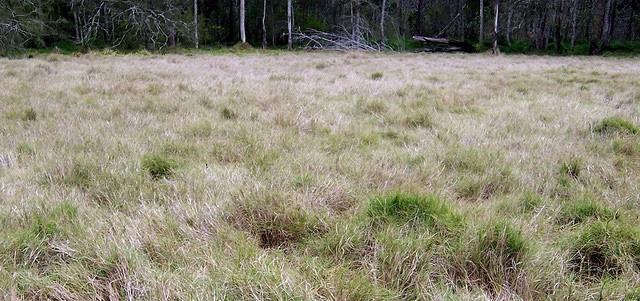
Summary of final report on the Australian Flora Foundation funded project:
Anthony R Smith White
School of Biological Sciences, University of New South Wales
September 06
The objective of this project was to investigate the potential of Sporobous virginicus in the turf grass industry for use in saline or salt affected areas. Two distinct forms of the species occur naturally in coastal areas of NSW however this study considered only the smaller form described as type 1 by Smith-White (1988) and as var. minor by others. Thirty six accessions (clones) of the grass were collected from the NSW coast between Lake Wonboyn, near the Victorian border and Nambucca Heads in northern NSW (Table 1). Clonal individuals were established and cultivated in sand in a glasshouse at the University of NSW.
The trial clearly demonstrated a high level of genetically controlled morphological variation within this species that is available for horticulturalists to draw on for special purposes. For the specimens used in the trial the one standing out as having real potential for cultivation as a lawn grass is the triploid number 22665. This clone was collected from an estuarine sand habitat at the mouth of Coila River in southern NSW. Ecotypic adaptation in this species is very developed and for any serious attempt to utilize naturally occurring accessions for specific purposes larger trials using greater plant numbers and with a range of differing salinity treatments would seem essential. Clonal spread in all chromosome races is predominately by rhizomatous growth and whilst both diploid and tetraploid races are sexually fertile, the triploid race is sexually sterile. Tripoids however may at times produce seed by agamospermy (Smith-White 1988). Should a triploid accession be used for cultivation it would have the advantage of being genetically isolated and therefore retain its character over time.
